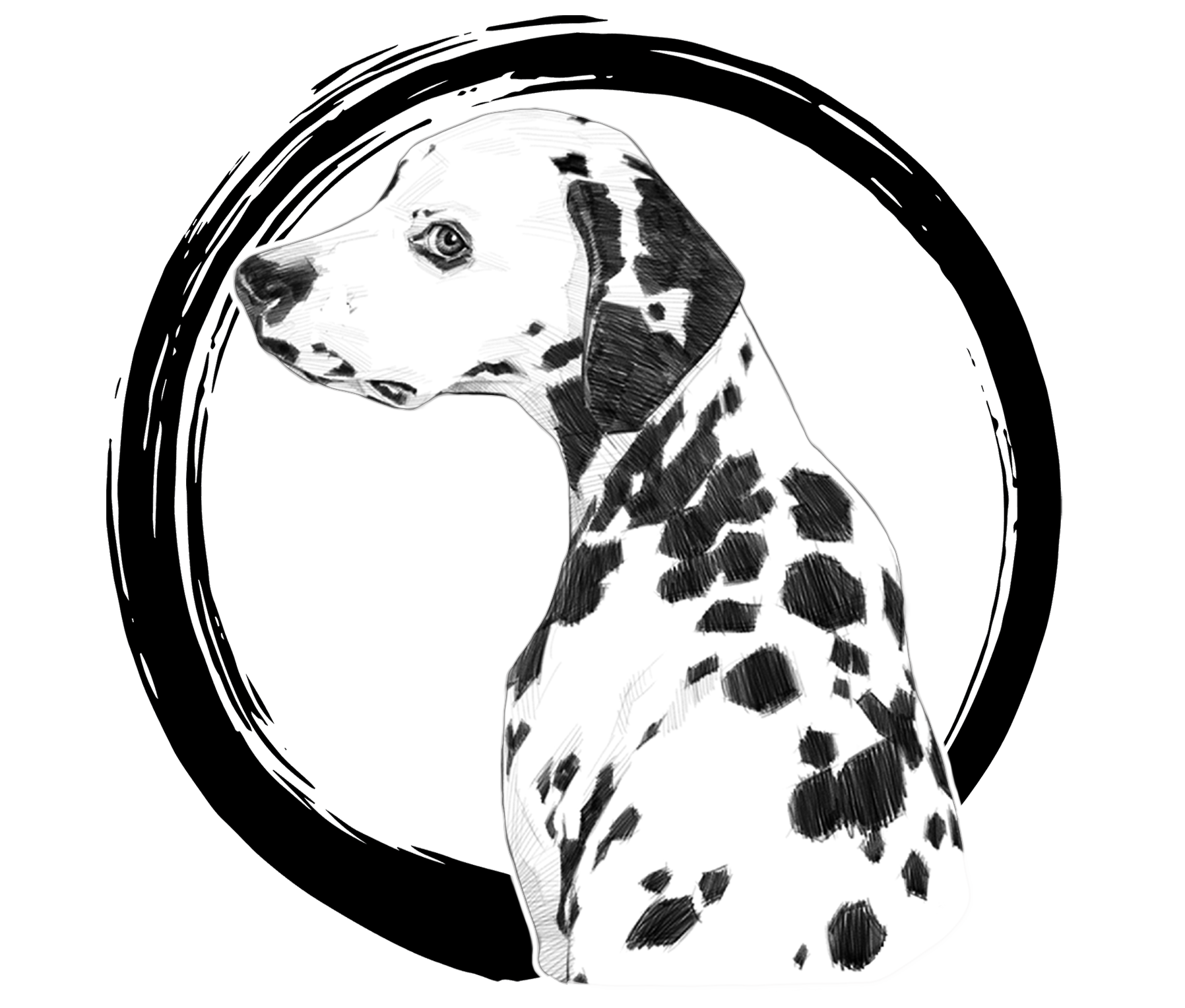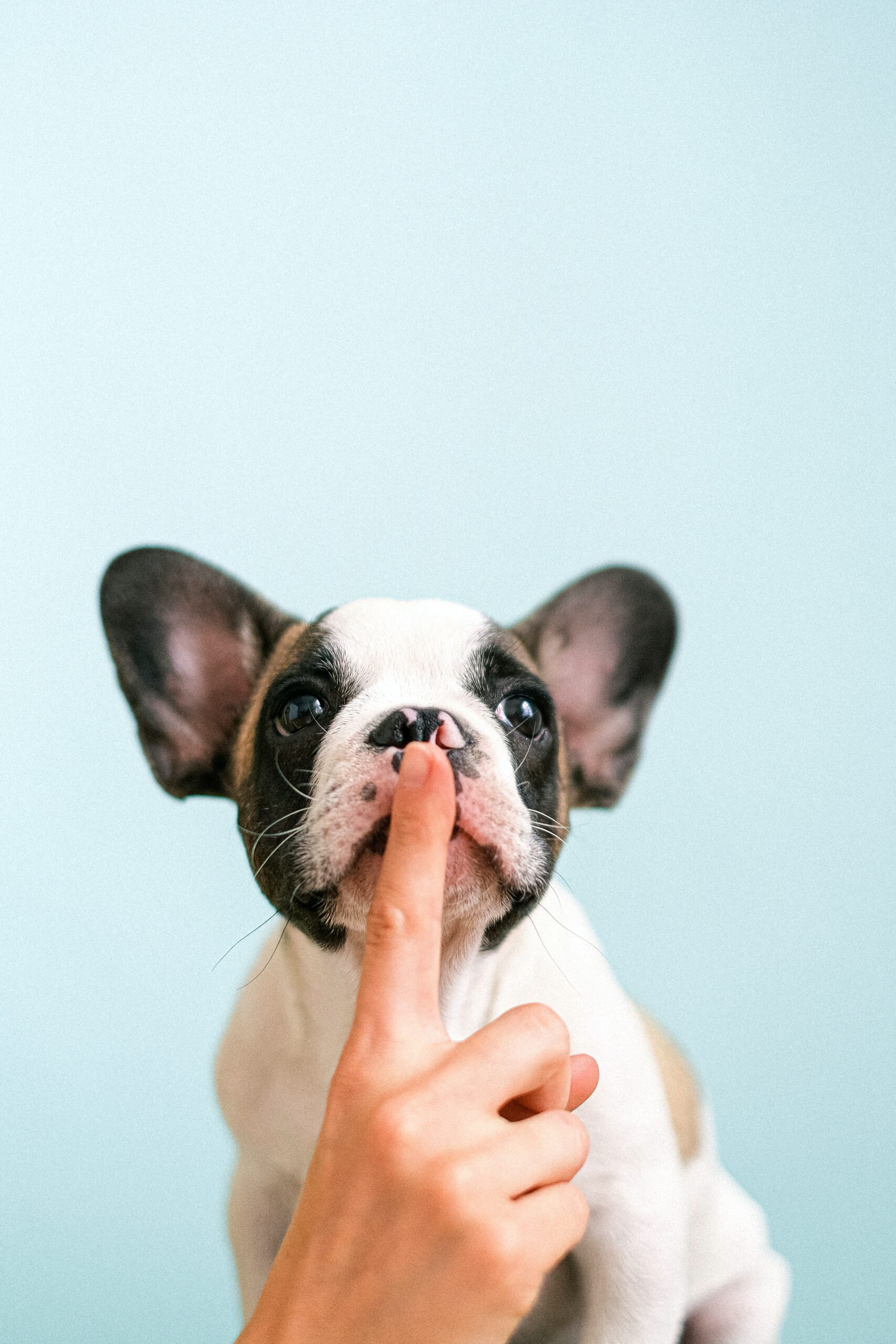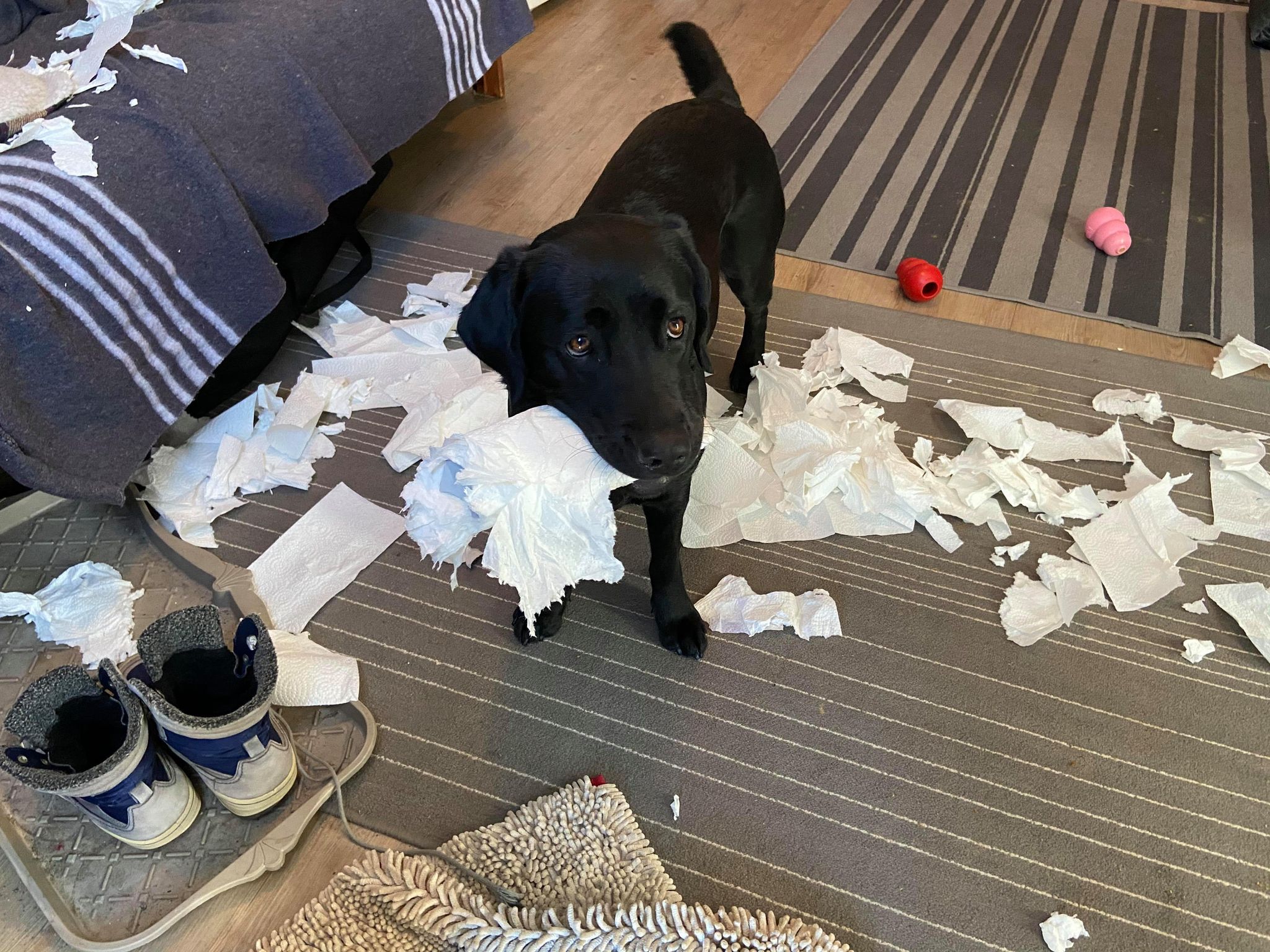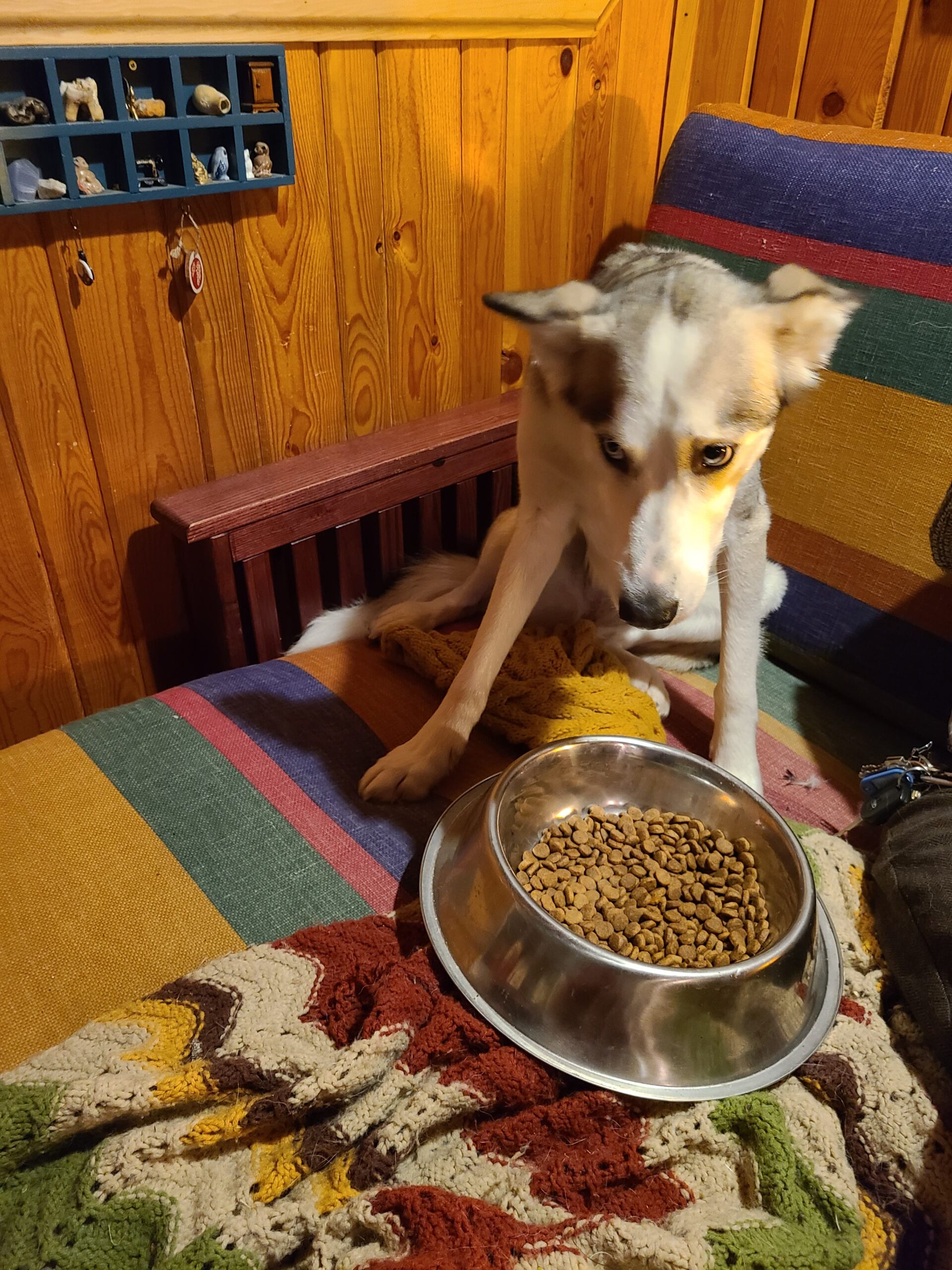Does your dog seem to never slow down? Is she constantly on the go, barking, running and asking you to play?
If so, your dog might indeed be “hyper-aroused” and need some special attention.
Our dogs don’t naturally know how to relax–often, we come home from work, and out of guilt or desire to please our dogs, we immediately grab a ball or a tug toy and start playing. We are often misinformed that a “tired dog is a good dog”, and while this might be true in the short term, it can create an adrenaline junkie. If all your dogs interactions with you as a pup were “go-go-go”, your dog might indeed not know how to just chill out.
To help with this, we’ve collected a short list of protocols for you. It’s important that your dog continues to get sufficient mental, physical, and social stimulation while you wean him off the hyper-arousal treadmill. We recommend using a longer leash, going for more slow paced sniffy walks, chewing on long lasting chew toys such as real meat bones and stuffed kongs. In addition, your dog will probably benefit from some massage or cuddle time, or gentle play. It’s amazing how many dogs like a super slow mo and gentle game of tug!
Exercise requirements vary by age and breed, as well as from individual dogs. However most dogs need a minimum of two 20 min walkies (on or off leash “free time”) a day. You can exchange one or more of these walks with some limited ball play (4-5 tosses), flirt pole, fitness games or other activities.
Another thing to keep in mind is the dogs natural schedule. Most dogs are naturally active in the morning, and again at dusk, with a lazy period in the middle. They generally like to eat shortly before or after this active period, and may need to toilet before and after, plus several times throughout the day. Meeting the dogs needs before they are urgent will help to reduce stress and anxiety, and reduce pesky demand behaviors. A fun walk before the dog is desperate will reduce anxiety and stress, and thus hyper-arousal, for both you and the dog.




